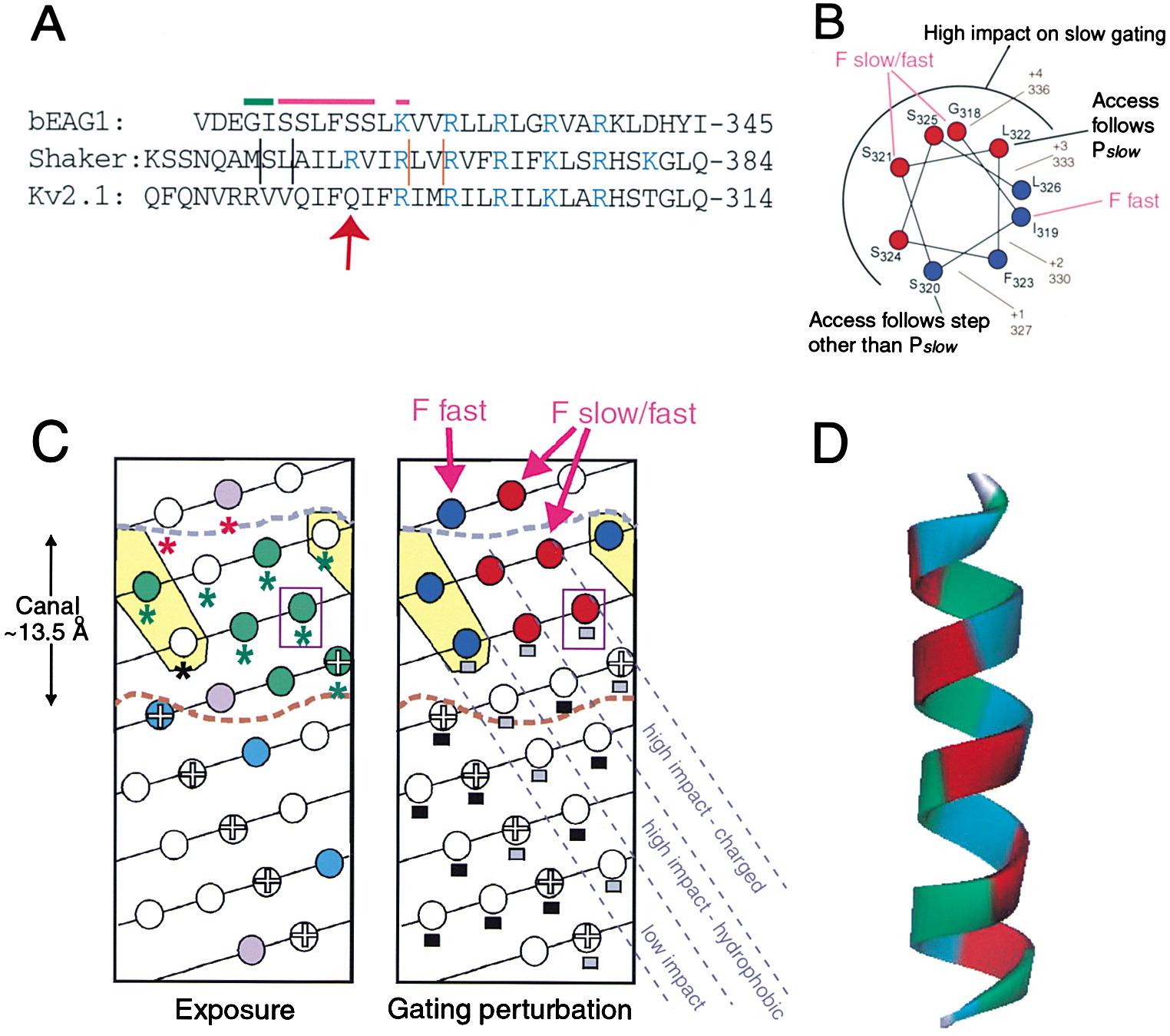
Conformational switch between slow and fast gating modes: allosteric regulation of voltage sensor mobility in the EAG K+ channel
Abstract
Total internal reflection fluorescence microscopy was used to detect single fluorescently labeled voltage-gated Shaker K+ channels in the plasma membrane of living cells. Tetramethylrhodamine (TMR) attached to specific amino acid positions in the voltage-sensing S4 segment changed fluorescence intensity in response to the voltage-driven protein motions of the channel. The voltage dependence of the fluorescence of single TMRs was similar to that seen in macroscopic epi-illumination microscopy, but the exclusion of nonchannel fluorescence revealed that the dimming of TMR upon voltage sensor rearrangement was much larger than previously thought, and is due to an extreme, ~20-fold suppression of the elementary fluorescence. The total internal reflection voltage-clamp method reveals protein motions that do not directly open or close the ion channel and which have therefore not been detected before at the single-channel level. The method should be applicable to a wide assortment of membrane-associated proteins and should make it possible to relate the structural rearrangements of single proteins to simultaneously measured physiological cell-signaling events.
Dynamic readouts of the structural rearrangements in membrane proteins have been obtained from changes in the fluorescence of site-specifically attached dyes. In ion channels the fractional fluorescent change can be large and very specific, differing in direction and amplitude and in which functional step is detected as the dye-attachment site is moved from one residue to the next. The mechanism of the fluorescence report is not known.
The fluorescence studies have so far been confined to large ensembles of proteins, where the variation from protein to protein in occupancy of distinct states blurs the transitions between them, even when activating signals are synchronized by voltage clamping. Such blurring can be avoided in single-molecule determinations. Obstacles to optical detection have so far limited single-molecule optical studies of protein rearrangement to purified preparations, out of the native cellular context. We have overcome these obstacles for the optical detection of structural rearrangements in single-membrane proteins in living cells, enabling functional transitions that do not open or close gates to be detected on the single-channel level.